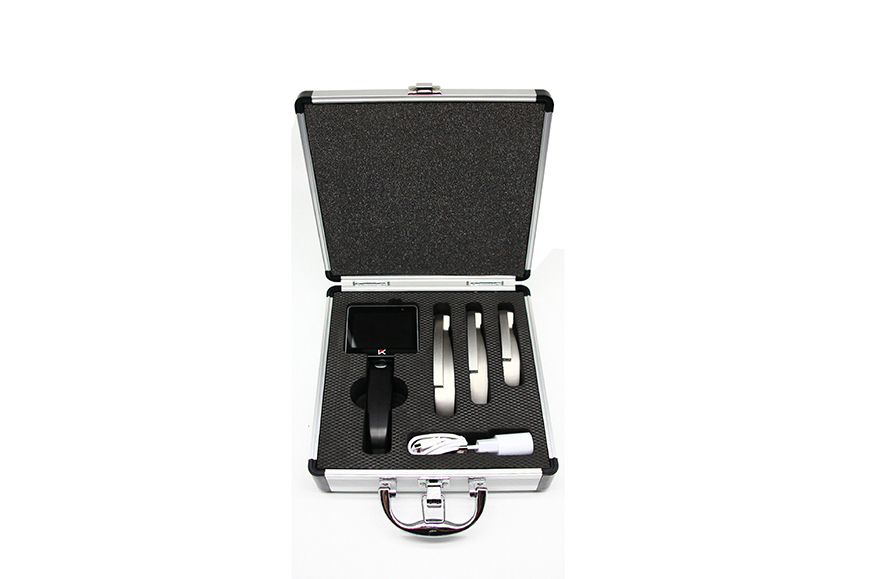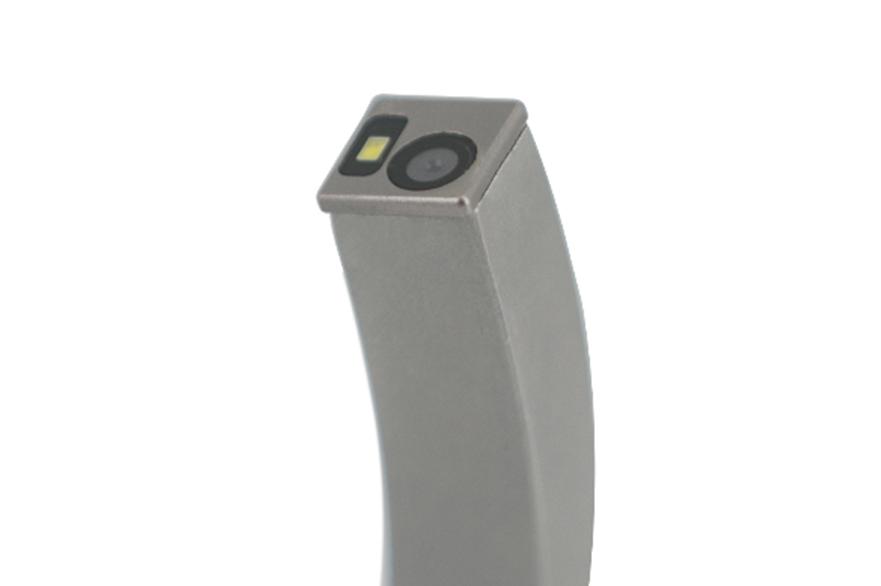4 Laryngoscopy Uses: What Do You Know
Dec 11, 2024
Have you ever wondered how doctors examine the delicate structures of the throat, such as the vocal cords and larynx, with precision and clarity? For many, it may be surprising to learn that the key to such examination lies in a medical procedure called laryngoscopy. This diagnostic and therapeutic tool plays an essential role in identifying and managing a variety of throat-related conditions. In this blog, we’ll explore the diverse Laryngoscopy Uses, its importance in patient care, and how modern advancements, like those offered by Mole Medical, are enhancing its effectiveness in clinical settings.

What Is a Laryngoscopy?
A laryngoscopy is a procedure used by ear, nose, and throat (ENT) specialists to examine the larynx (voice box) and vocal cords. During the procedure, a doctor uses a device called a laryngoscope, which features a light and camera to provide a detailed view of the throat’s interior. This examination can help diagnose, treat, and even prevent a range of medical issues related to the voice box and surrounding structures.
Laryngoscopy is commonly performed to diagnose conditions such as hoarseness, throat pain, difficulty swallowing, or breathing problems. It can also be a life-saving procedure in emergencies, such as when a foreign object is lodged in the throat or the airway is compromised. The use of video laryngoscopes, such as those provided by Mole Medical, has revolutionized this procedure by offering clearer visualization and enhanced accuracy.
Key Uses of Laryngoscopy in Medicine
Laryngoscopy Uses 1. Diagnosing Throat and Voice Box Conditions
One of the primary applications of laryngoscopy is in diagnosing conditions that affect the throat and vocal cords. Many patients visit their doctor complaining of persistent hoarseness, throat pain, or difficulty swallowing. These symptoms can be indicative of a range of conditions, from infections and inflammation to tumors or polyps on the vocal cords.
Laryngoscopy allows ENT specialists to visually assess the larynx and surrounding structures, providing critical insights that are often not visible through traditional physical exams. With this tool, doctors can accurately diagnose conditions such as:
a. Laryngeal cancer or tumors
b. Vocal cord paralysis or dysfunction
c. Gastroesophageal reflux disease (GERD) affecting the voice box
d. Throat infections or inflammatory conditions
By detecting these issues early, laryngoscopy plays a vital role in preventing complications and guiding appropriate treatment plans, including surgical interventions or medication adjustments.

Laryngoscopy Uses 2. Removing Foreign Objects from the Throat
Sometimes, patients—particularly children—accidentally ingest or inhale small foreign objects that become lodged in their airway or throat. In such cases, quick intervention is crucial to prevent suffocation or other serious injuries. Laryngoscopy is often used as an emergency procedure to visualize and remove foreign objects from the throat.
The procedure involves inserting a laryngoscope into the throat to locate the foreign object and, in some cases, use surgical tools to remove it. Video laryngoscopes like those provided by Mole Medical enhance the surgeon’s ability to see and act quickly, reducing the risk of trauma to delicate tissues.
Laryngoscopy Uses 3. Biopsy and Tissue Sampling
In some cases, doctors may need to take tissue samples from the throat or vocal cords for biopsy—a procedure where a small piece of tissue is removed and examined under a microscope for signs of cancer or other diseases. Laryngoscopy allows specialists to take precise tissue samples from difficult-to-reach areas without the need for invasive surgery.
This is particularly useful for patients with suspicious growths or lesions in the throat or larynx, helping doctors determine whether the growth is benign or malignant. The biopsy results can guide treatment decisions, including the need for chemotherapy, radiation, or surgical removal of abnormal tissue.
Laryngoscopy Uses 4. Treating Voice Box Issues
Laryngoscopy is not just a diagnostic tool—it is also used to treat a range of voice box problems. In some cases, the procedure can be used to remove polyps, nodules, or growths from the vocal cords. Laryngoscopy can also be used to treat airway obstructions or repair structural issues, such as vocal cord paralysis.
By using specialized instruments inserted through the laryngoscope, doctors can perform minor surgeries or interventions that improve the function of the larynx and vocal cords, helping patients regain their ability to speak or breathe normally.
How Modern Laryngoscopes Enhance Patient Care
Mole Medical’s Portable Video Laryngoscope: A Game Changer
The advent of video laryngoscopes has significantly improved the safety, accuracy, and efficiency of laryngoscopy procedures. Mole Medical, a leading supplier in the field, provides state-of-the-art portable video laryngoscopes that are transforming clinical practice. These devices offer a high-definition display that allows practitioners to view the airway structures in clear, magnified detail, making it easier to identify the glottis and surrounding anatomy.

The portability of Mole Medical’s video laryngoscopes ensures they can be used in a wide range of medical settings, from emergency rooms and intensive care units (ICUs) to pre-hospital environments. These laryngoscopes are compact, lightweight, and equipped with anti-fog technology, ensuring clear visibility even in challenging conditions.
Key Features of Mole Medical’s Video Laryngoscopes:
Enhanced Visualization: The high-definition display provides a clear and magnified view of the airway, reducing the risk of injury during intubation.
Portability: The device’s lightweight and compact design make it easy to carry and use in various clinical settings, including emergency situations.
Anti-Fog Technology: Instant anti-fog features ensure the lens remains clear, even in high-humidity environments.
Versatility with Attachments: The device comes with a range of interchangeable blades, making it adaptable to different patient anatomies, from infants to adults.
Improved Success Rates: By providing a direct, consistent view of the airway, the video laryngoscope increases the likelihood of successful first-attempt intubation, crucial in emergency scenarios.
Practical Applications in Different Medical Settings
The versatility of Mole Medical’s video laryngoscope makes it suitable for various medical departments, including:
Intensive Care Units (ICUs): Video laryngoscopes assist in managing patients with respiratory distress or those requiring intubation for mechanical ventilation.
Neonatal Intensive Care Units (NICUs): Specialized blades and adjustments allow for safe and effective procedures for infants and newborns with respiratory needs.
Emergency Departments (EDs): The portability and ease of use make it ideal for emergency situations where time is critical, such as in trauma cases or airway management.
Anesthesia: Video laryngoscopes are essential in intubating patients for surgeries or procedures under general anesthesia, ensuring that the airway is secure and free from obstructions.
The Advantages of Video Laryngoscopy: Why It Matters
1. Increased Patient Safety
One of the primary advantages of video laryngoscopy is its ability to improve visualization during procedures like intubation. With a clearer view of the airway and vocal cords, doctors can perform procedures with more precision, reducing the risk of complications like trauma, aspiration, or failed intubation attempts.

2. Higher Success Rates
Thanks to enhanced visualization, video laryngoscopes improve the chances of successful first-attempt intubation, especially in patients with difficult airways. This is particularly important in emergency situations where every second counts, as failed intubation can lead to hypoxia (lack of oxygen) and other life-threatening complications.
3. Time Efficiency
The portability and ease of use of video laryngoscopes streamline the intubation process, enabling healthcare providers to work quickly and efficiently in critical situations. Mole Medical’s video laryngoscopes are particularly beneficial in emergency departments or ICUs, where fast and effective airway management is essential.
4. Educational and Training Tool
Video laryngoscopes also serve as valuable teaching tools, allowing medical students and trainees to observe real-time intubation procedures. The ability to view the procedure from multiple angles and perspectives helps enhance learning and improves the skills of future healthcare providers.
Conclusion
Laryngoscopy is an indispensable tool in modern medicine, playing a pivotal role in diagnosing, treating, and managing a wide range of throat-related conditions. Mole Medical’s innovative video laryngoscopes enhance the effectiveness and safety of this procedure, offering clear visualization, portability, and reliability in critical medical settings. Whether it’s diagnosing hoarseness, removing foreign objects, or intubating patients in emergency situations, the advancements in laryngoscopy have made a significant difference in patient outcomes. For healthcare providers seeking the best solutions in airway management, Mole Medical stands out as a trusted partner in delivering cutting-edge laryngoscopic technology.
Categories
Latest Articles

Essential Laryngoscope Parts and Their Vital Uses
The laryngoscope is a vital medical instrument that allows doctors to examine the throat and vocal cords with precision. By providing a clear view of the airway, it plays a crucial role in various medical procedures, particularly in airway management. This tool is essential for ensuring patients can breathe properly, as it facilitates safe and ... Read more

From cleaning to maintenance: a holistic management strategy for Mole medical electronic bronchoscopes
In the modern medical field, electronic bronchoscope is an important tool for the diagnosis and treatment of respiratory diseases, and its accuracy and safety are directly related to the treatment effect and life safety of patients. Mole Medical's electronic bronchoscopes are widely recognized for their superior performance and precise diagnostic capabilities. However, to ensure that this high-end equipment is always in top condition, a comprehensive management strategy from cleaning to maintenance is essential.

More than ten years focus on the field of anesthesia Jiangsu Mole Medical, providing airway equipment for thousands of hospitals around the world
More than ten years focus on the field of anesthesia Jiangsu Mole Medical, providing airway equipment for thousands of hospitals around the world

Emergency department essential: Mole medical portable video endotracheal intubation scope in the actual advantages of pre-hospital emergency
In the complex environment of pre-hospital emergency treatment, establishing artificial airway quickly and accurately is one of the key steps to save patients' lives. The traditional endotracheal intubation operation under direct laryngoscope has some problems such as limited field of vision and difficult operation, especially in the case of patients with limited neck movement, excessive oral secretions or anatomic abnormalities, and the success rate may be affected. In recent years, with the advancement of medical technology, portable video endotracheal intubation scopes have gradually become an important tool in emergency departments. Among them, the portable video endotracheal intubation scopes of Mole Medical show significant practical advantages in pre-hospital emergency care with its unique design and performance.

Disposable Video Laryngoscope for Adult Intubation: Advanced Airway Management
Why is good airway management important in emergencies and surgeries? Doctors and nurses must quickly and safely place a breathing tube in many patients. This is especially hard when the airway is difficult to see or reach. Video laryngoscopes help with this. They have a small camera that shows a clear view of the airway. ... Read more



